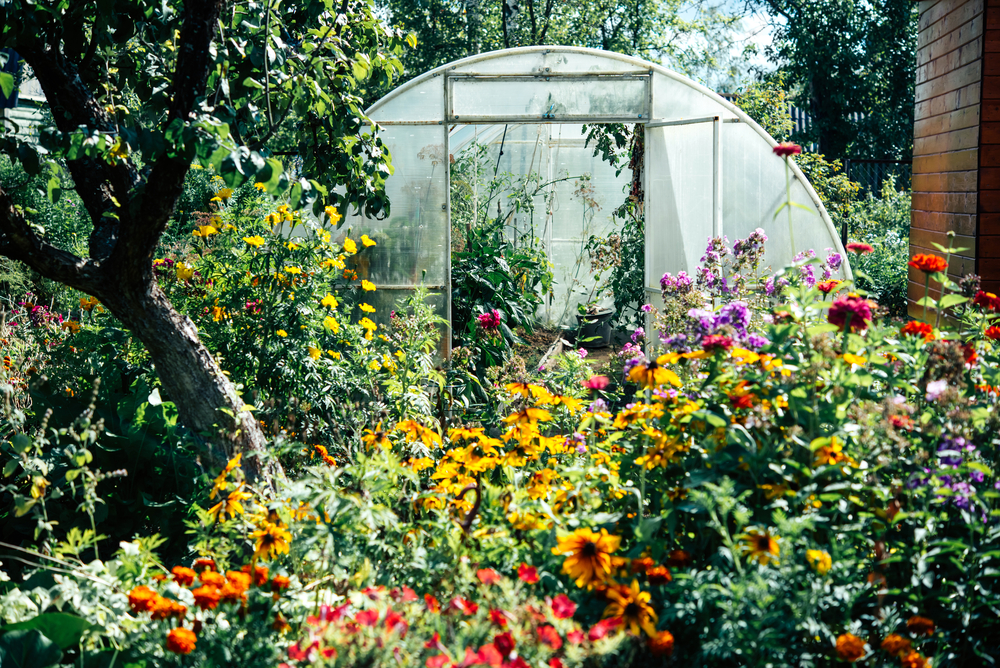
If you have just started a vegetable garden, you might not think much about flowers. But flowers are important – and many work perfectly alongside the fruits, vegetables and herbs in a vegetable garden.
There are a huge number of edible flowers to consider. But flowers can also serve a range of other functions, such as repelling pests or acting as a trap crop to draw away harmful bugs, replenishing nutrients in the soil and much more.
Here are twelve of the best flowers to grow in the vegetable garden, with a brief summary of why they make such good additions:
1. Marigolds (Tagetes)
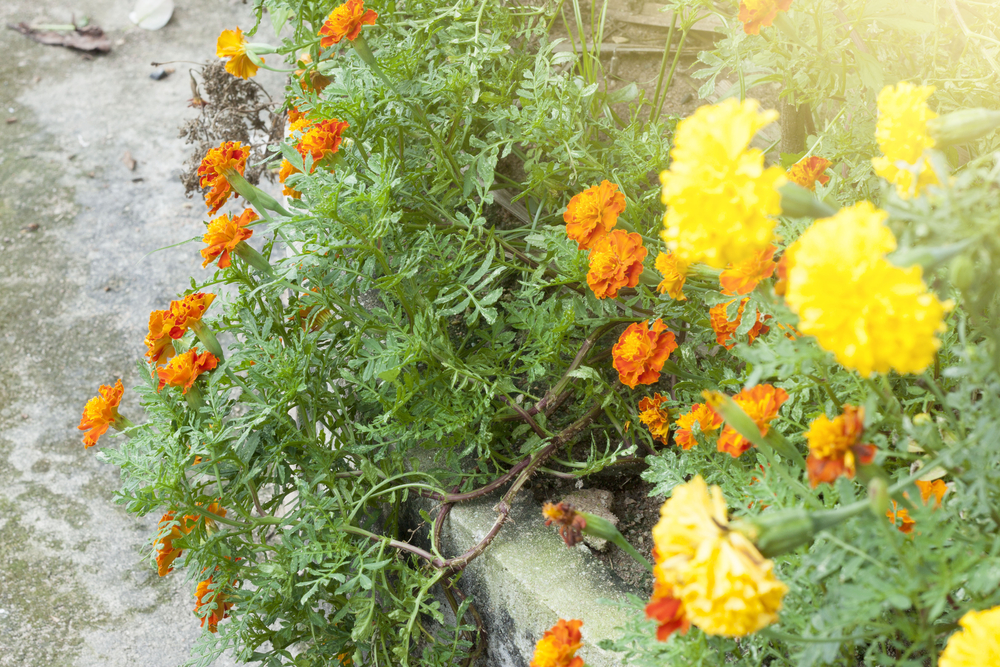
French Marigolds (Tagetes patula) are an excellent choice for your vegetable garden.
Not only are they a useful edible flower, they are also a great companion plant. It is believed that they excrete chemicals that help keep harmful nematode numbers down. They also attract bees and other pollinators, and beneficial predatory insects. They may also confuse, repel or act as a trap crop for a range of pest species.
2. Borage

Borage is another amazing annual to include in vegetable garden polycultures. This is another edible flower, that can be very much at home in amongst your fruits and vegetables.
It is very easy to grow, and self-seeds readily. It’s great for bees and acts as a trap crop for aphids, so it also attracts the predatory insects that eat them. It is also great for birds.
Borage also breaks up and aerates the soil with its root system, and is a dynamic accumulator of nutrients that can be chopped and dropped, turned into a liquid feed, or added to your compost heap.
3. Nasturtiums
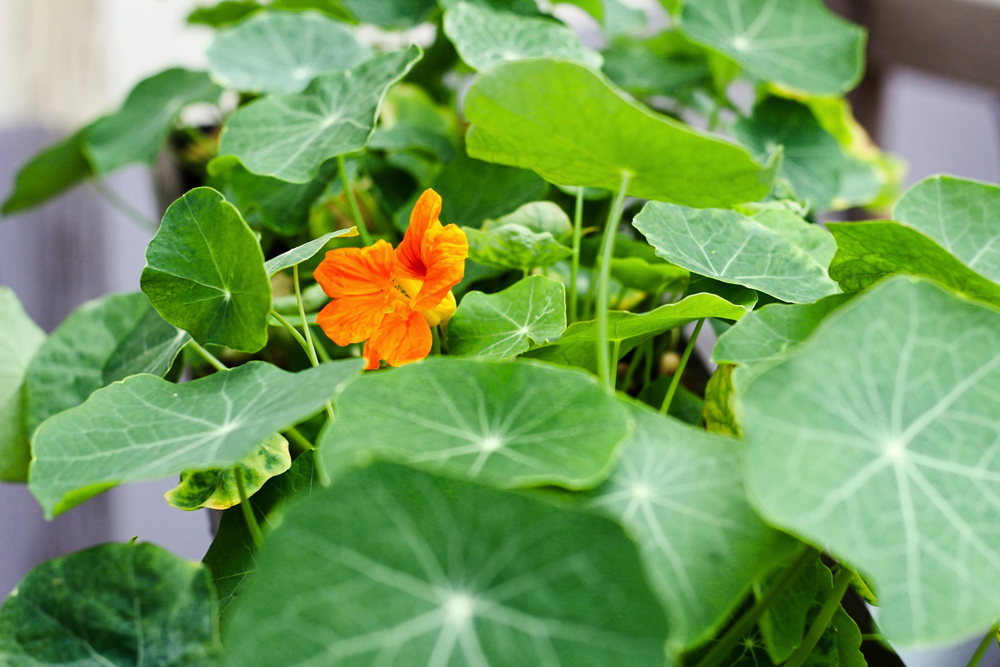
Nasturtiums are great value as a vegetable garden flower. They also provide an edible yield in their own right. Here are some great nasturtium recipes to try.
When in bloom, they attract plenty of pollinators and other beneficial insects. They also attract pests as a trap crop, keeping them away from prized produce. Nastutiums work well as a companion crop for a range of commonly cultivated cucurbits and other plants since they are believed to repel or confuse a number of other common pests.
Nasturtiums also provide great ground cover around other plants, helping to keep soil covered, retain moisture and suppress weeds.
4. Calendula
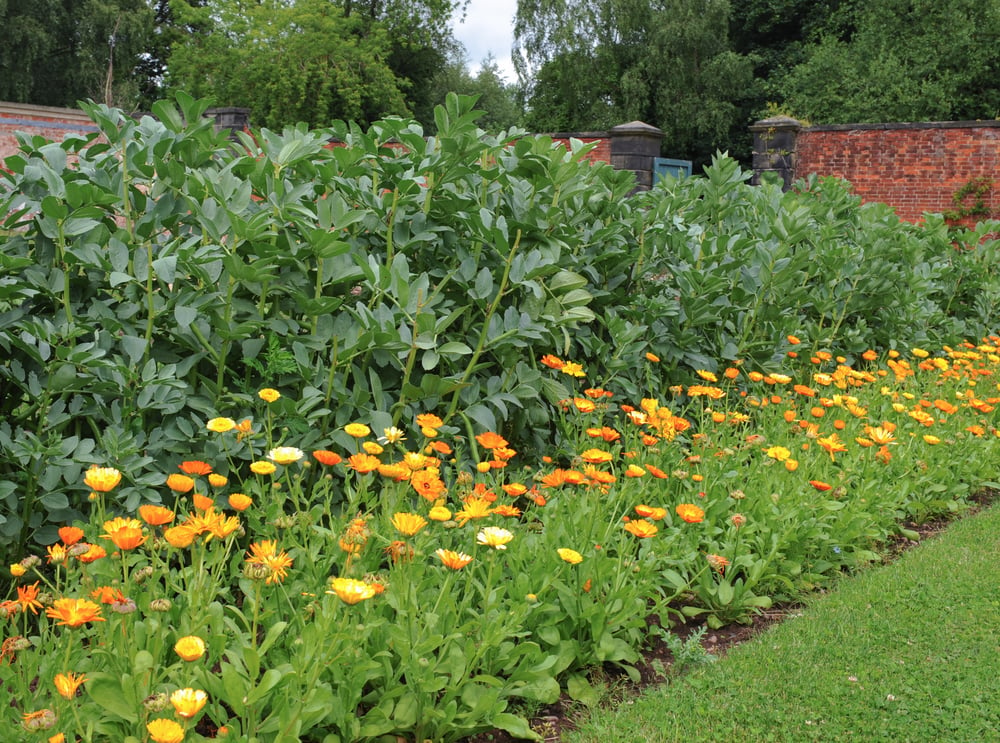
Calendula (Pot Marigolds) should not be confused with the French marigolds described above, but these too can be a wonderful flowering plant to grow in a vegetable garden.
Calendula also attracts a range of pollinators – bees, butterflies and more. It also attracts predatory insects, and acts as a trap crop for aphids and other pests.
Calendula also has great value as a living mulch or cover crop. Its thick, fibrous roots can help protect the soil. As blooms begin to fade, you can use them as compost activators. You can also use them in a wide range of ways around your home.
Interestingly, these flowers could also help you with weather forecasting – the blooms close in humid conditions helping to indicate when wet weather is on the way.
5. Sunflowers

Sunflowers are another of the best flowers to grow in the vegetable garden. They are not only good for edible seeds, but also as supports for other plants. Climbing and vining edibles can grow up their sturdy stems.
Sunflowers can serve a similar purpose to corn in a ‘three sisters’ planting scheme.
But it is worthwhile noting that sunflowers can have an allelopathic effect on plants grown nearby, inhibiting their growth. (Don’t grow them near potatoes, for example.)
6. Lavender
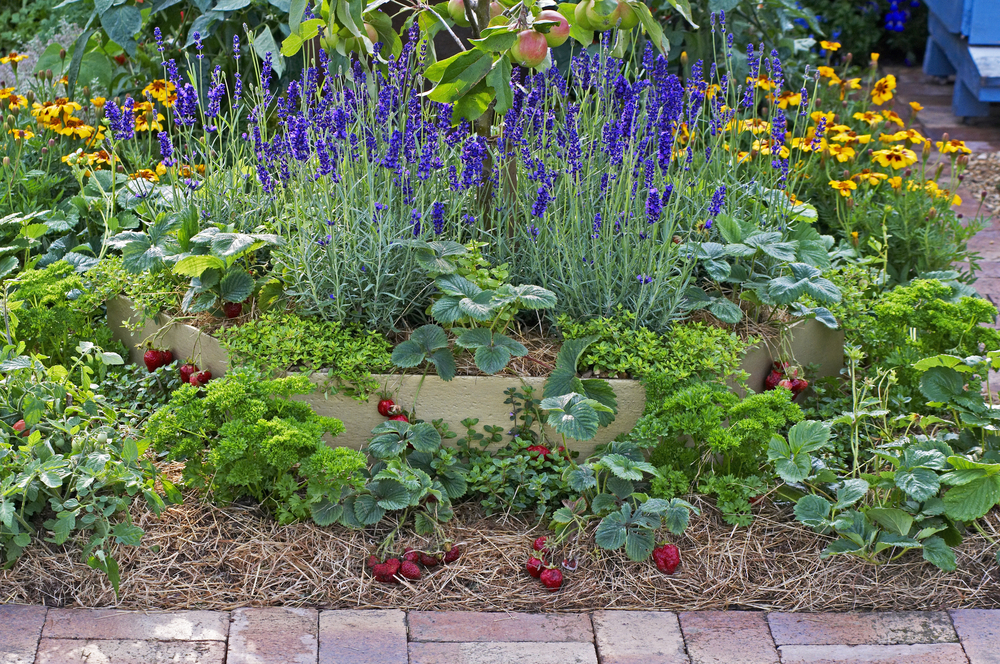
Lavender likes free-draining, sunny conditions so can be an excellent companion plant for fruits and vegetables with similar growing requirements. It will do well grown near asparagus, for example, and other Mediterranean herbs.
Place lavender on a mound around a vegetable bed and it can also make a delightful natural bed edging.
Lavender not only smells divine, it is also another great plant for pollinators and beneficial insects. Of course, lavender also has culinary applications. And it can be used in a wide range of other ways around your home.
7. Cosmos
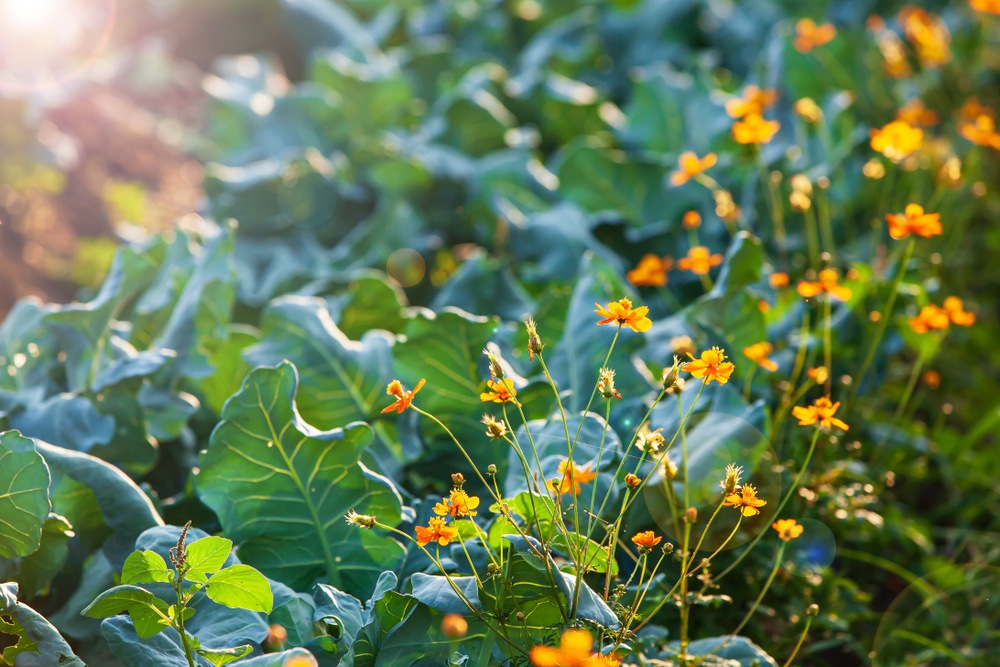
There are a wide range of flowers predominantly grown for cut flowers that will also fit in very well in your vegetable garden.
Cosmos are one excellent example that flowers over a relatively long period. They are very easy to grow, and are another great wildlife-friendly plant, helping to draw in a wide range of insects – including pollinators and predatory insects that will help keep aphids and other pest species at bay.
8. Sweet Peas
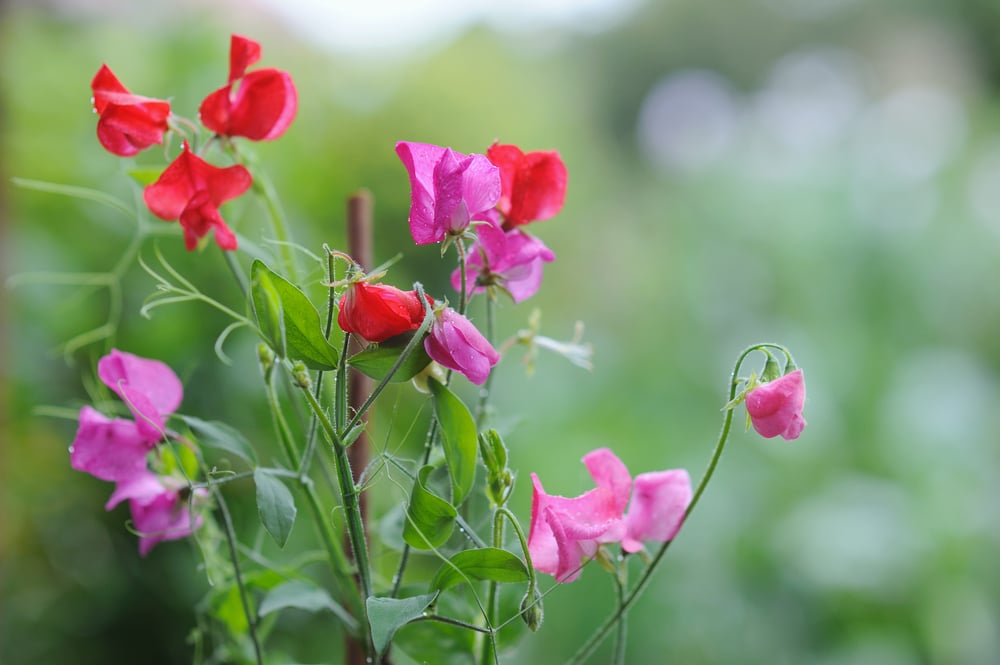
Sweet peas are another favourite with many gardeners, and are lovely both in the garden, and when used for cut flowers. Though they are most definitely not edible for we humans, plenty of other garden creatures enjoy them enormously.
Sweet peas are ideal for growing up a trellis or other support alongside peas, beans or other climbing plants. And they will not only look good. They will also help attract pollinators to your crops.
9. Phacelia
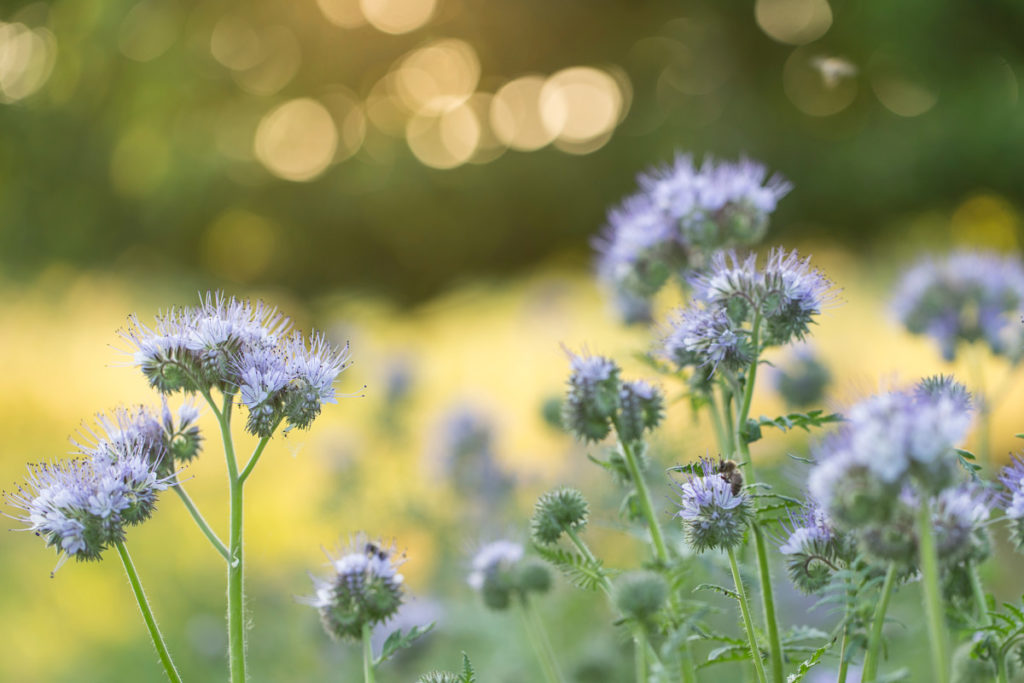
Phacelia’s beautiful purple/blue flowers are beloved of bees, hoverflies and other beneficial insects. So a few left to flower can be beneficial as a companion crop.
The dense fern-like foliage also helps smother weeds and create good soil cover, while the extensive root system of the plant improves the soil structure.
Phacelia also self seeds readily, but is usually chopped and dropped as a green manure – often before flowering. This helps improve the soil. It works well integrated within a crop rotation plan.
10. Lupins
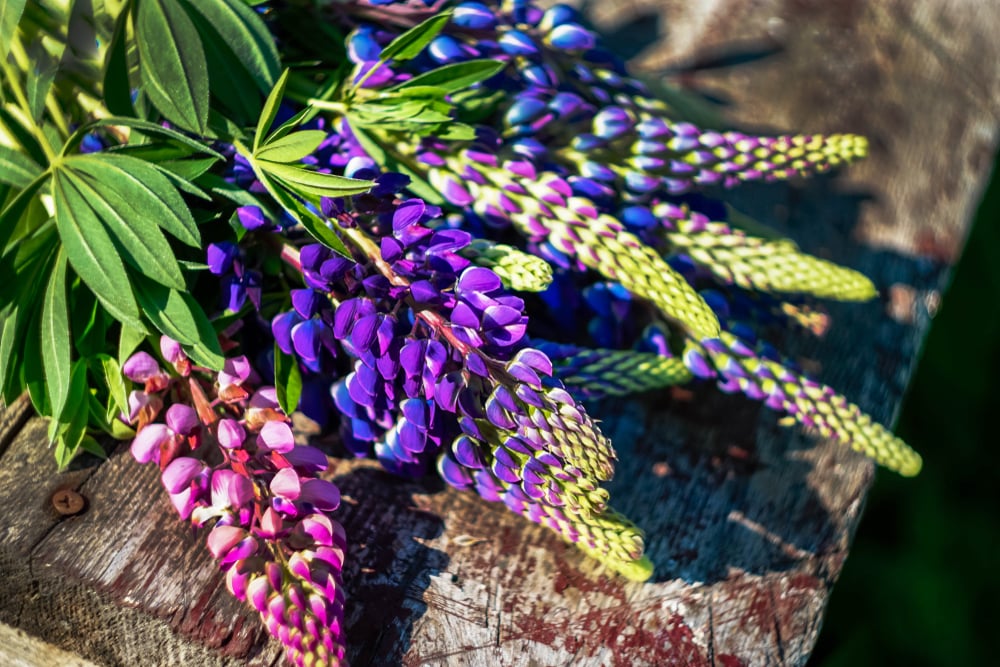
Lupins are a nitrogen fixing flowering plant that can also work well in crop rotation. Like peas, beans and other legumes, lupins will help to add nitrogen to the soil in your vegetable garden.
These are also a bee friendly plant, and will help to attract a range of beneficial wildlife to your growing areas.
11. Clover
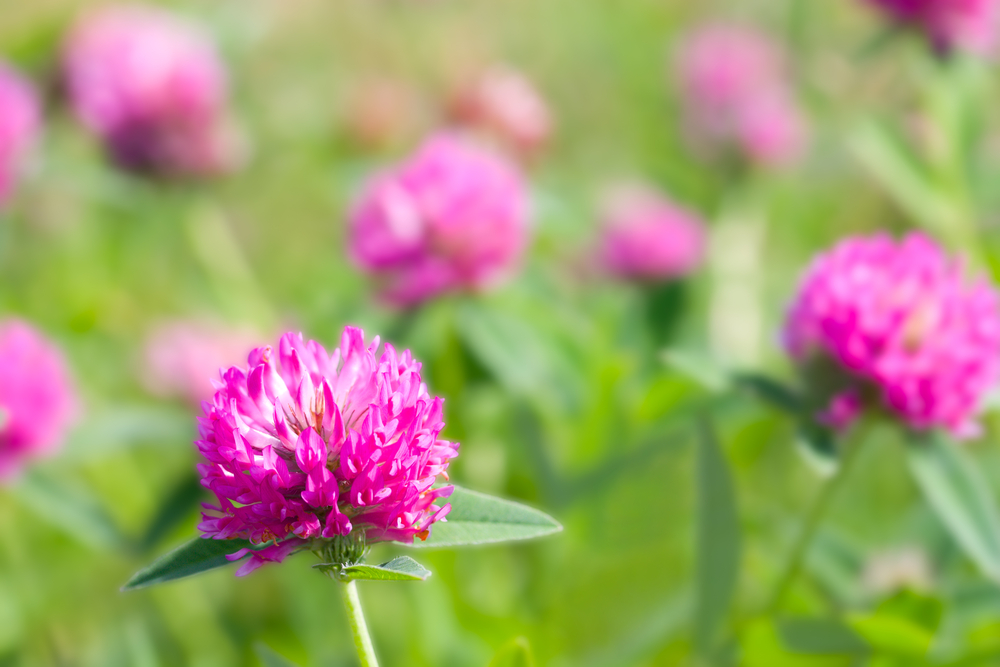
This is another nitrogen fixing plant that could be used as a green manure/ in crop rotation to maintain fertility in your vegetable garden.
Clover could also potentially be used as a companion crop for a range of common annuals – helping to provide ground cover to reduce moisture loss and weeds, as well as fixing nitrogen.
When in flower, clover is also another great plant for pollinators and other beneficial insects.
12. Comfrey
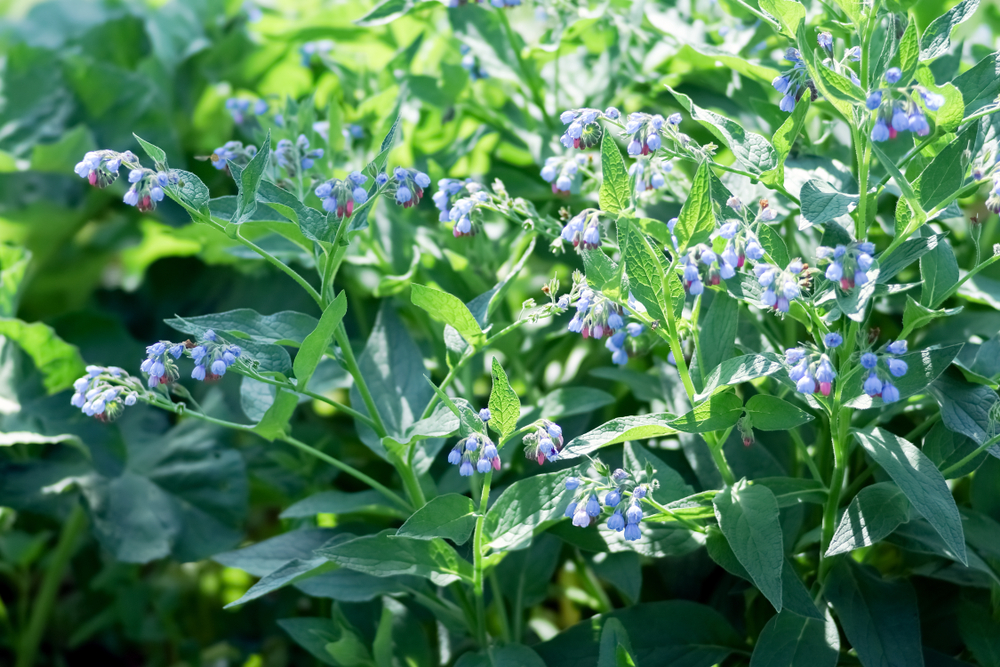
Finally, comfrey is also an interesting flower to grow in or on the fringes of your vegetable garden.
Comfrey is beloved of bees and other insects too. But the main reason to give it some space in your garden (in a perennial vegetable bed, or in a shady corner of an annual vegetable plot) is to use it as a source of fertilizer for nearby growing areas.
Comfrey’s deep tap roots mean it cannot be moved easily. But choose the right spot and it is great for composting, mulches and liquid feeds. Here’s how to make your own comfrey liquid fertilizer.
By growing a range of flowers amongst your typical crops, you can make the most of the space in your garden. The thriving polycultures you create will help ensure that your garden’s fertility and yield continue to improve over time.
Flowers, just like fruits, vegetables and herbs, are a crucial component of organic gardening.

Get the famous Rural Sprout newsletter delivered to your inbox.
Join the 50,000+ gardeners who get timely gardening tutorials, tips and tasks delivered direct to their inbox.

